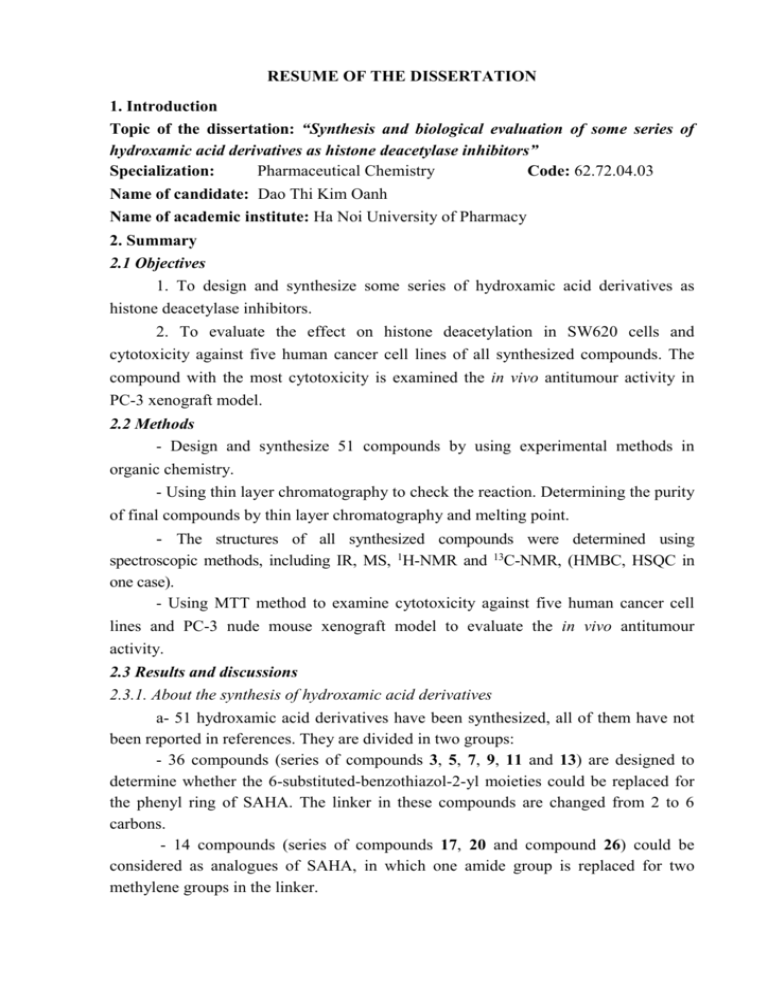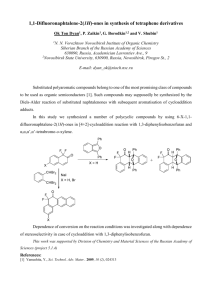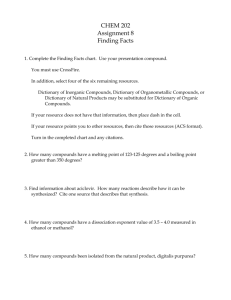BỘ GIÁO DỤC VÀ ĐÀO TẠO
advertisement

RESUME OF THE DISSERTATION 1. Introduction Topic of the dissertation: “Synthesis and biological evaluation of some series of hydroxamic acid derivatives as histone deacetylase inhibitors” Specialization: Pharmaceutical Chemistry Code: 62.72.04.03 Name of candidate: Dao Thi Kim Oanh Name of academic institute: Ha Noi University of Pharmacy 2. Summary 2.1 Objectives 1. To design and synthesize some series of hydroxamic acid derivatives as histone deacetylase inhibitors. 2. To evaluate the effect on histone deacetylation in SW620 cells and cytotoxicity against five human cancer cell lines of all synthesized compounds. The compound with the most cytotoxicity is examined the in vivo antitumour activity in PC-3 xenograft model. 2.2 Methods - Design and synthesize 51 compounds by using experimental methods in organic chemistry. - Using thin layer chromatography to check the reaction. Determining the purity of final compounds by thin layer chromatography and melting point. - The structures of all synthesized compounds were determined using spectroscopic methods, including IR, MS, 1H-NMR and 13C-NMR, (HMBC, HSQC in one case). - Using MTT method to examine cytotoxicity against five human cancer cell lines and PC-3 nude mouse xenograft model to evaluate the in vivo antitumour activity. 2.3 Results and discussions 2.3.1. About the synthesis of hydroxamic acid derivatives a- 51 hydroxamic acid derivatives have been synthesized, all of them have not been reported in references. They are divided in two groups: - 36 compounds (series of compounds 3, 5, 7, 9, 11 and 13) are designed to determine whether the 6-substituted-benzothiazol-2-yl moieties could be replaced for the phenyl ring of SAHA. The linker in these compounds are changed from 2 to 6 carbons. - 14 compounds (series of compounds 17, 20 and compound 26) could be considered as analogues of SAHA, in which one amide group is replaced for two methylene groups in the linker. - Furthermore, a thiazole-based compound (23) was synthesized in order to get insight into the role of a fused benzene ring in benzothiazole moiety. The structures of all synthesized compounds were determined using spectroscopic methods, including IR, MS, 1H-NMR and 13C-NMR. 2.3.2. About the biological activities - All of synthesized compounds are examined the effect on histone deacetylation in SW620 cells. Several compounds (9a-c, 9f-h and 23) at 1 g/ml enhanced the acetylation of histone-H3 and -H4, resulting from the inhibition of HDAC enzymes by these compounds. In addition, the effects of 9a-h and 23 on enzyme activity of HDAC2 are measured. The results demonstrate that all nine compounds evaluated were much more potent than SAHA as HDAC2 inhibitors. - 51 compounds are examined the cytotoxicity against five human cancer cell lines (SW620, MCF-7, PC3, AsPC-1 and NCI-H460), using MTT method. Nine compounds showed cytotoxic potential with average IC50 values from 0,32 µg/ml to 16,89 µg/ml. In overall, two compounds 9b, 9g were almost equipotent to SAHA in term of cytotoxicity. - From the in vitro profile compound 9g was chosen for in vivo antitumour evaluation in PC-3 xenograft model. The results obtained clearly demonstrate that 9g administered at 30 mg/kg exhibited antitumor activity comparable to that of SAHA. Tumor growth inhibition rate of 9g at 30 mg/kg, calculated based on the tumor weight, was found to be 49,0%, which was comparable to 48,3% of SAHA at the same dose. In conclusion, the results of the dissertation showed that benzothiazole moiety could be replaced for phenyl ring in SAHA and 9g showed great potential for further development. The academic advisors Doctoral candidate Ass. Pro, Dr. Nguyen Hai Nam MSc. Dao Thi Kim Oanh






